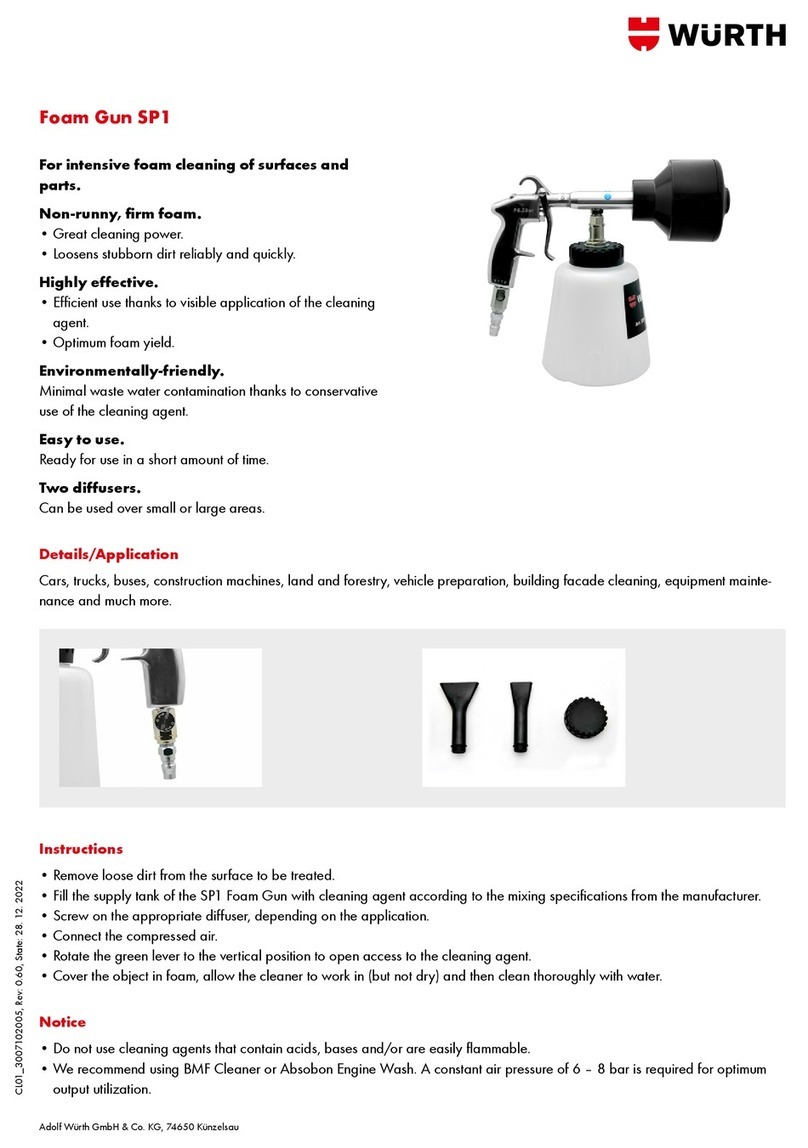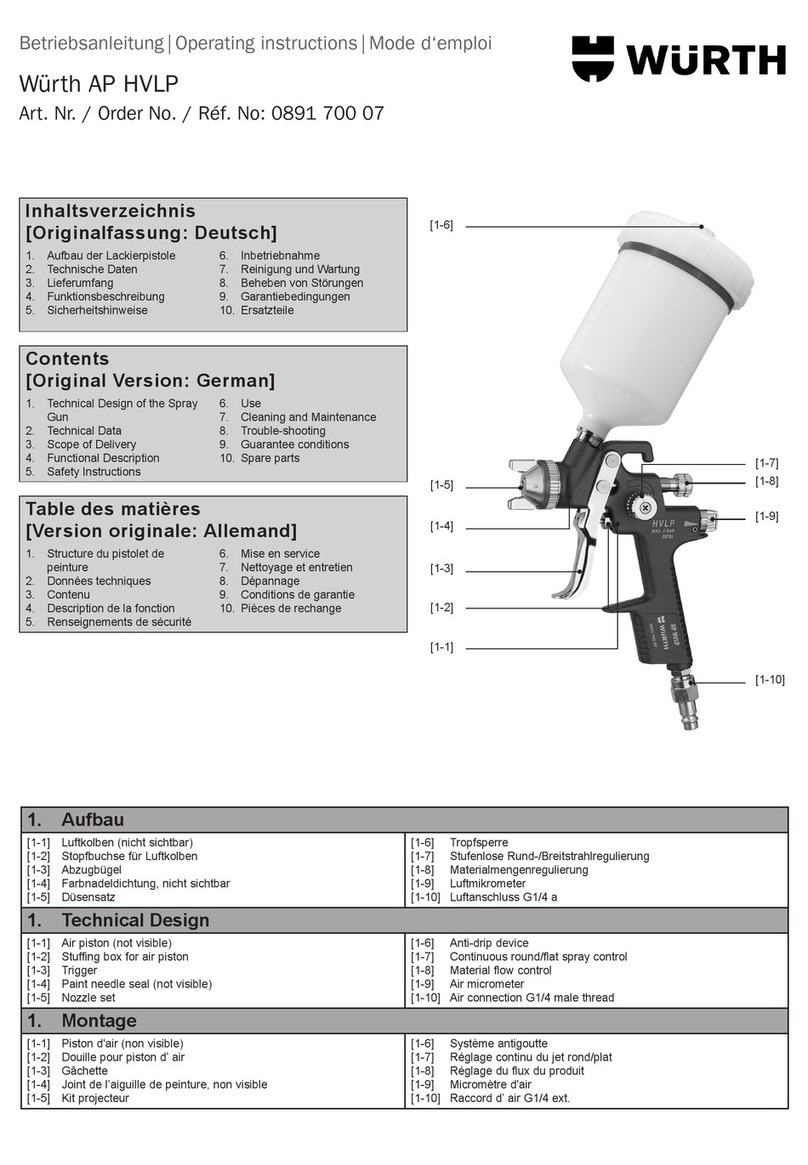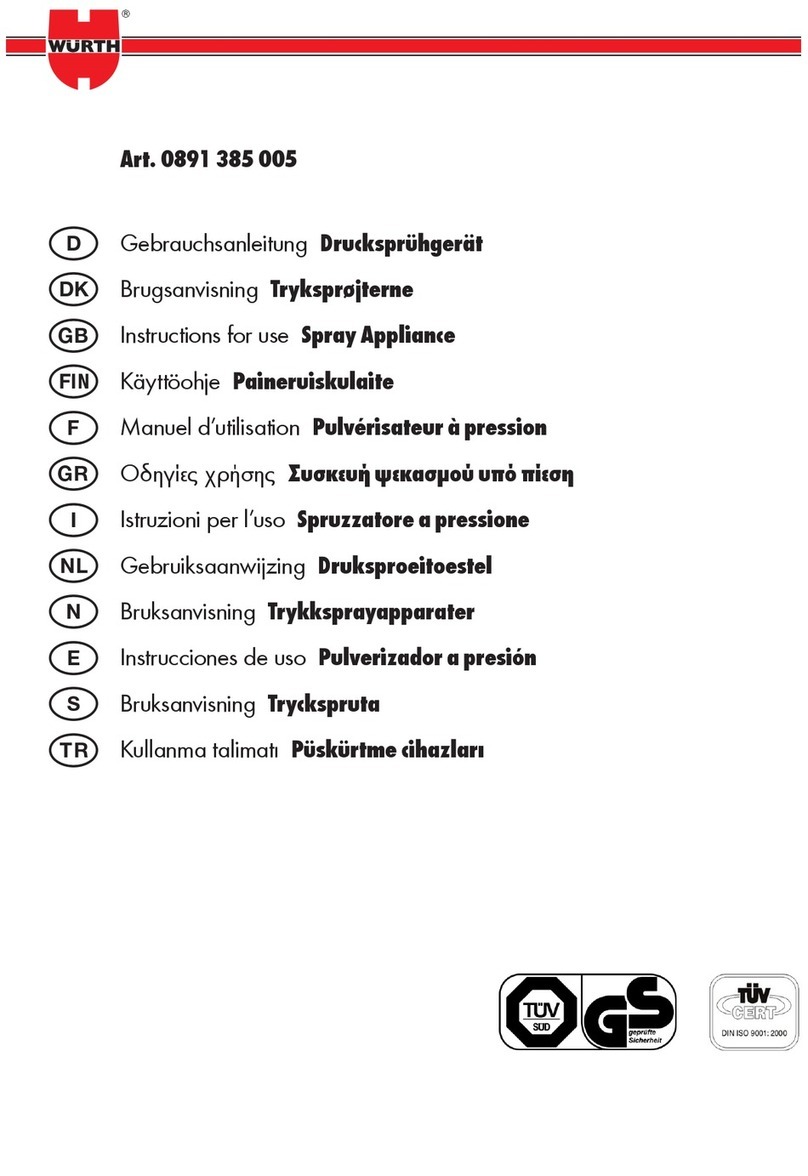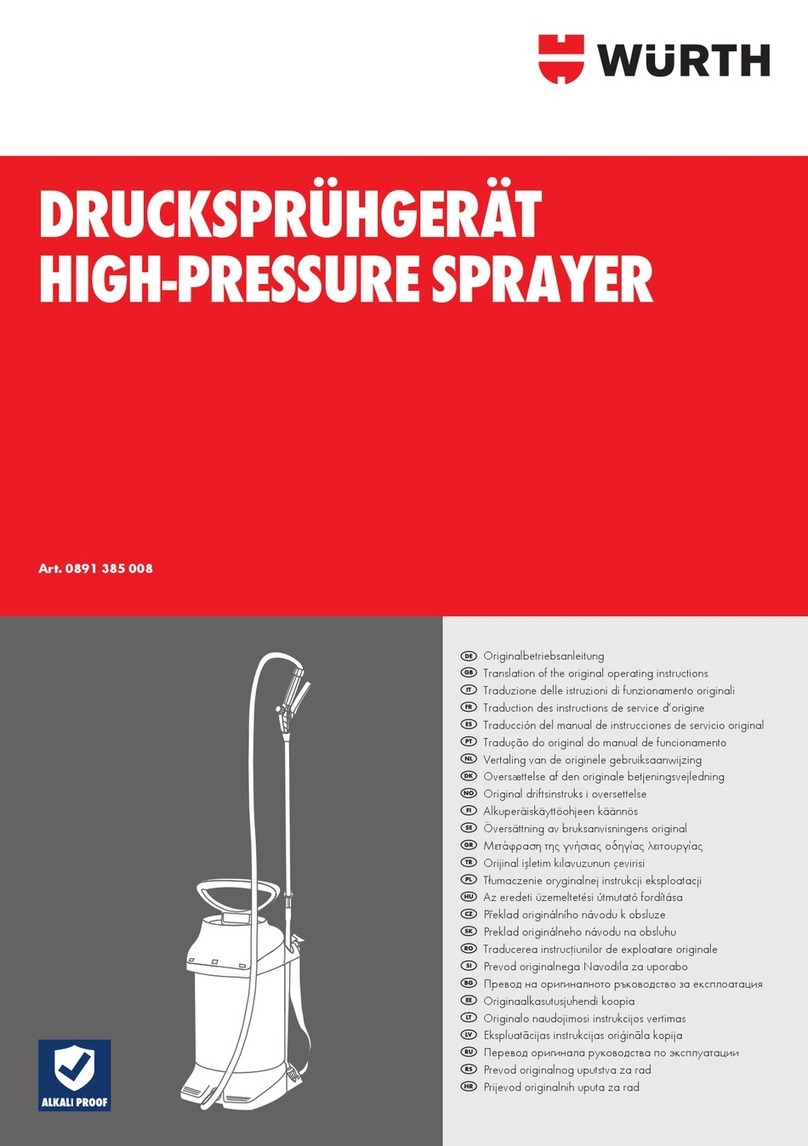
6
Aufbau von Sicherheitshinweisen
GEFAHR !
Art und Quelle der Gefahr!
ÂFolgen bei Nichtbeachtung
¾Maßnahme zur
Gefahrenabwehr
Selbst- und Personenschutz
■Personen unter 18 Jahren dürfen nicht mit
dem Gerät arbeiten. Ausgenommen sind unter
Aufsicht arbeitende Jugendliche über 16 Jahren,
die in einem Ausbildungsverhältnis stehen.
■Seien Sie aufmerksam und gehen Sie mit Ver-
nunft an die Arbeit.
■Tragen Sie immer eine geeignete persönliche
Schutzausrüstung (geeignete Schutzbrille, geeig-
nete Schutzhandschuhe).
■Tragen Sie spezielle Atemschutzlter/-masken.
■Tragen Sie Spezialkleidung, um den Körper vor
einem Kontakt mit giftigen Dämpfen, Lösemitteln
oder den verarbeiteten Materialien zu schützen.
ÂBei einigen Lacken, die organische Lösemittel
enthalten, kann es aufgrund der von ihnen
ausgehenden giftigen Dämpfe zu Vergiftung
kommen.
¾Lesen Sie vor dem Gebrauch in jedem Fall die
technischen Datenblätter der zu verwendenden
Materialien.
¾Das Tragen persönlicher Schutzausrüstung,
verringert das Verletzungsrisiko.
■Gerät niemals gegen ein Körperteil, gegen sich
selbst oder andere Personen richten.
Sicherheit im Arbeitsbereich
■Bei der Auswahl und vor der Verwendung
des zu verarbeitenden Materials, anhand des
zugehörigen Sicherheitsdatenblattes prüfen,
dass es sich mit dem Arbeitsumfeld und den
einzelnen Schutzvorrichtungen verträgt.
■Lackieranlage immer ordnungsgemäß erden.
■Gerät von Kindern fern halten und nie unbeauf-
sichtigt liegen lassen.
■Vor allen Arbeiten am Gerät, in Arbeitspausen
sowie bei Nichtgebrauch, die Druckluftversor-
gung trennen.
Brand- oder Explosionsgefahr
■Keine Lösemittel und/oder Reinigungsmittel auf
Basis von halogenierten Kohlenstoen (Ethyltri-
chlorid, Methylchlorid, usw.) verwenden.
ÂDerartige Mittel könnten Korrosion an verzink-
ten Teilen bewirken, die explosive chemische
Reaktionen hervorrufen können.
■Keine brennbaren Flüssigkeiten verwenden.
■Oenes Feuer und Funkenbildung vermeiden.
■Den maximalen Betriebsdruck von 8 bar niemals
überschreiten!
■Gerät nur in gut belüfteten Räumen verwenden.
Spezielle Sicherheitshinweise
■Vor Arbeitsbeginn auf einwandfreie Funktion,
Vollständigkeit sowie die Betriebs- und Funkti-
onstüchtigkeit des Gerätes prüfen.
■Ein fehlerhaftes Gerät nicht verwenden!
■Gerät nicht verwenden, wenn seine Unver-
sehrtheit aufgrund eines Stoßes oder Sturzes
möglicherweise beeinträchtigt ist. Dies gilt
insbesondere für dauerhaft beanspruchte Teile,
verstellbare Teile oder druckbelastete Teile.
ÂEs ist durchaus
möglich, dass Beeinträchti-
gungen, wie z. B. Brüche, Risse oder ähnliche
Erscheinungen, nicht direkt erkennbar sind.
¾In diesem Fall Gerät nicht benutzen, sondern
vor erneutem Gebrauch kontrollieren und
testen. Im Zweifelsfall mit dem Vertriebspartner
in Verbindung setzen, bevor das Gerät weiter
benutzt wird.
Sicherheitshinweise







































